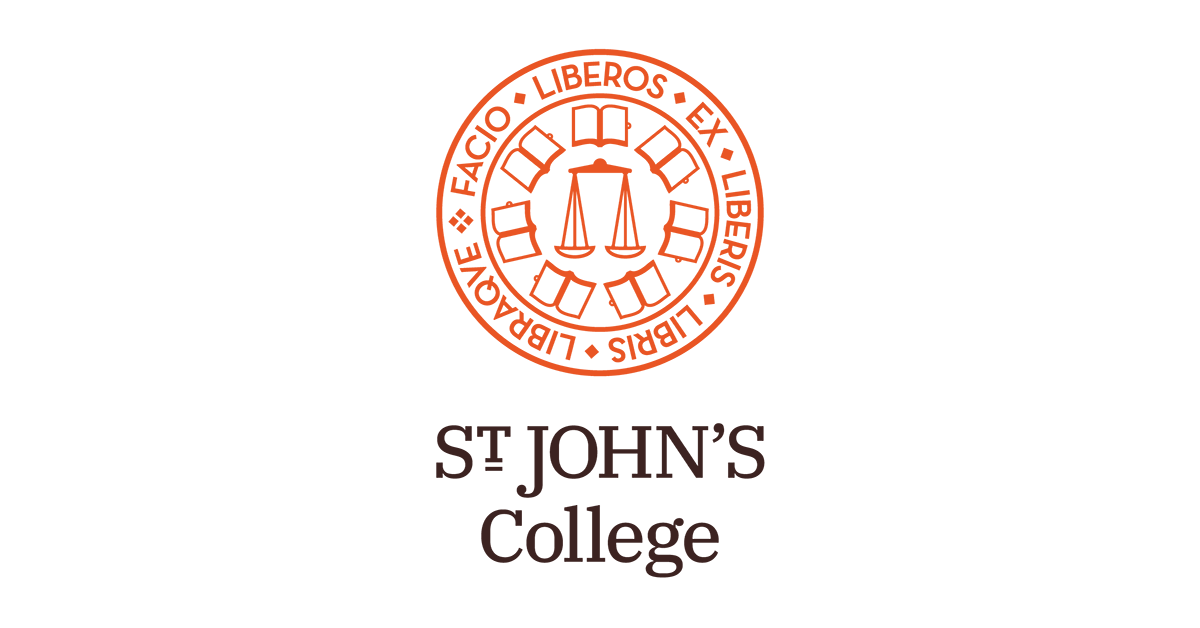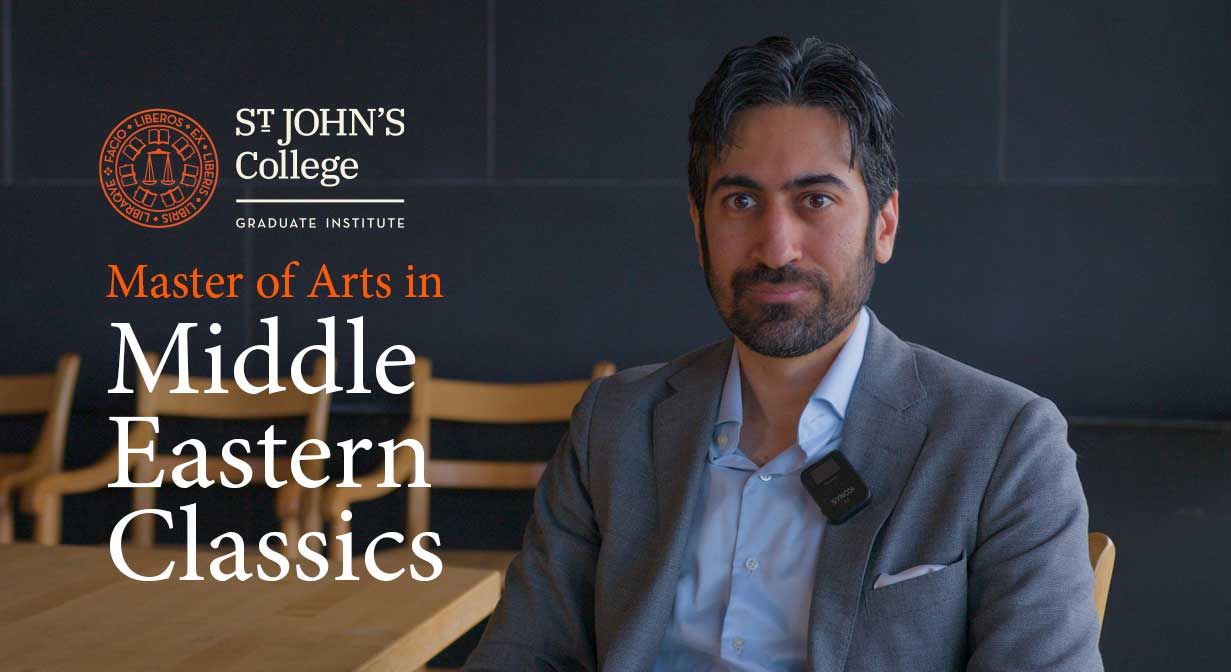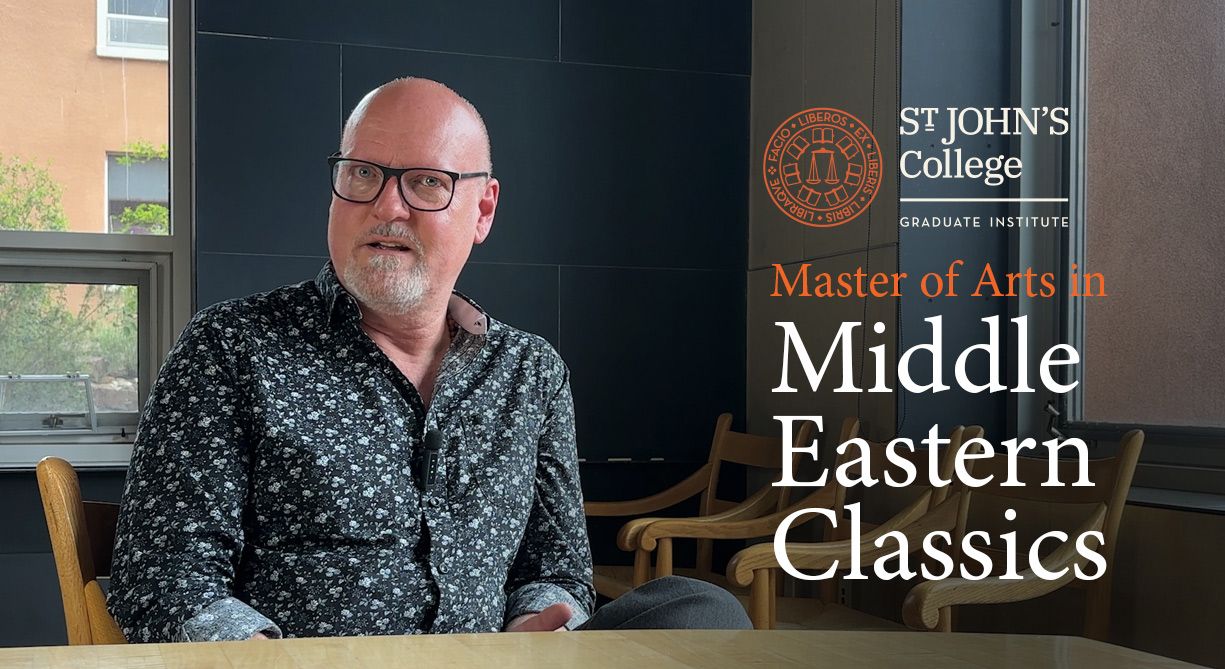Master of Arts in Middle Eastern Classics
We are currently accepting applications for the fall 2026 semester.
The Master of Arts in Middle Eastern Classics (MAMEC) invites a close study of the texts that influenced the Islamic Middle East in the time between the fall of Rome and the European Renaissance, and centers on the great texts and authors of these Jewish and Islamic civilizations, providing students with an unrivaled opportunity to engage with rich literary traditions. The program commences in fall semesters and is offered on campus in Santa Fe.
On shaping the Master of Middle Eastern Classics program and elevating the connections between the great books of the Jewish and Islamic traditions and the great books studied in the liberal arts program at St. John’s.
Reflecting on the spirit of the program and what it means to read and discuss the great Jewish and Islamic texts, along with an invitation to visit and sit in on a class to experience it for yourself.
Religious Questions of the Divine Middle Eastern Classics Seminar
The Seminar is the core of the Middle Eastern Classics Program. It is three semesters long and provides students the opportunity to read the Hebrew Bible alongside the essential works of Islamic philosophy and theology, as well as Persian literature and poetry, and both Islamic and Jewish criticisms of the Aristotelian tradition. Throughout this class students and tutors alike attempt to address questions such as: What is the relationship between human and divine wisdom? What is the soul, and what does it mean to attain happiness as a spiritual being? And, what is the proper role of religion in political society?
Plato, Aristotle, and Plotinus First Preceptorial
To read Middle Eastern classical texts in earnest—whether the Qur’ān, Islamic philosophy, or Jewish thought—is to step into a conversation already underway with the ancient Greeks. As such, the first preceptorial will explore the writings of Plato, Aristotle, and Plotinus to build a foundation that is later questioned, challenged, and occasionally welcomed by the philosophers of the Middle East.
Qur’ān and Life of Muhammad Second Preceptorial
This class invites students to reflect on two of the most influential texts in the Islamic world: the Qur’ān and Ibn ’Isḥāq’s Life of Muhammad. The Qur’ān is first and foremost an audiobook, so students will begin by listening to recordings recited in various styles as they discover the Qur’ān not only as scripture but as a literary, philosophical, and moral work. While lacking narrative structure, the narrative throughline that holds the Qur’an together is provided by early accounts of the life and career of Muhammad. Examining the two texts together, students will uncover the complementary nature of one illuminating and being illuminated by the other.
al-Fārābī and Maimonides Third Preceptorial
Through a careful study of key texts by al-Fārābī (870–950) and Maimonides (1138–1204), two of the most influential figures in the Muslim and Jewish reception of Greek philosophy, respectively, students will encounter such themes as the character and purpose of philosophy, the relationship between human and divine wisdom, and the best way for a human being to live. Although these authors represent different religious traditions and lived centuries apart, they are closely aligned in their understanding of the questions facing man as both a political and spiritual animal.
Ibn al-‘Arabī’s Ringstones of Wisdom and Rūmī Fourth Preceptorial
In the fourth preceptorial, students will dive into a key work by the thirteenth-century Andalusian Sufi master, ‘Ibn al-‘Arabī, who is known to distinguish himself from both rationalists and those who follow God by blind faith when answering the question “How do we come to know God?” These readings are complemented by the poetry of Rūmī, originator of the “Whirling Dervishes.” Though he’s been called the best-selling poet in America, it’s been said of Rūmī, “No one ever understood him as he should have been understood. He came into the world a stranger and left it a stranger,” something students will attempt to uncover.
Classical Hebrew Language Tutorial
Language is a constitutive part of all thought. In the Middle Eastern Classics program, students choose to study either Classical Hebrew or Classical Arabic to see the texts we read in translation in new, revealing light. Classical Hebrew is especially challenging for English-speakers because it contains few words that have relatives in English. In addition, its alphabet, though related to ours, looks quite different. Fortunately, we will have excellent resources at our disposal Thomas Lambdin’s Introduction to Biblical Hebrew. A special benefit of Lambdin’s book is that by the end of fall semester it will have us reading the Joseph story from Genesis.
Classical Arabic Language Tutorial
Language is a constitutive part of all thought. In the Middle Eastern Classics program, students choose to study either Classical Arabic or Classical Hebrew to see the texts we read in translation in new, revealing light. Classical Arabic offers a great challenge for English-speakers: while it has influenced many modern languages, its grammar, vocabulary, and script differ significantly from English. Its rich root system and intricate syntax open new dimensions of meaning in classical texts. Fortunately, we will have excellent resources at our disposal, including Wheeler Thackston’s Introduction to Classical Arabic. A special benefit of Thackston’s book is that by the end of the fall semester, we will be reading selections from the Qur’ān and classical Arabic prose, deepening both linguistic understanding and cultural insight.






